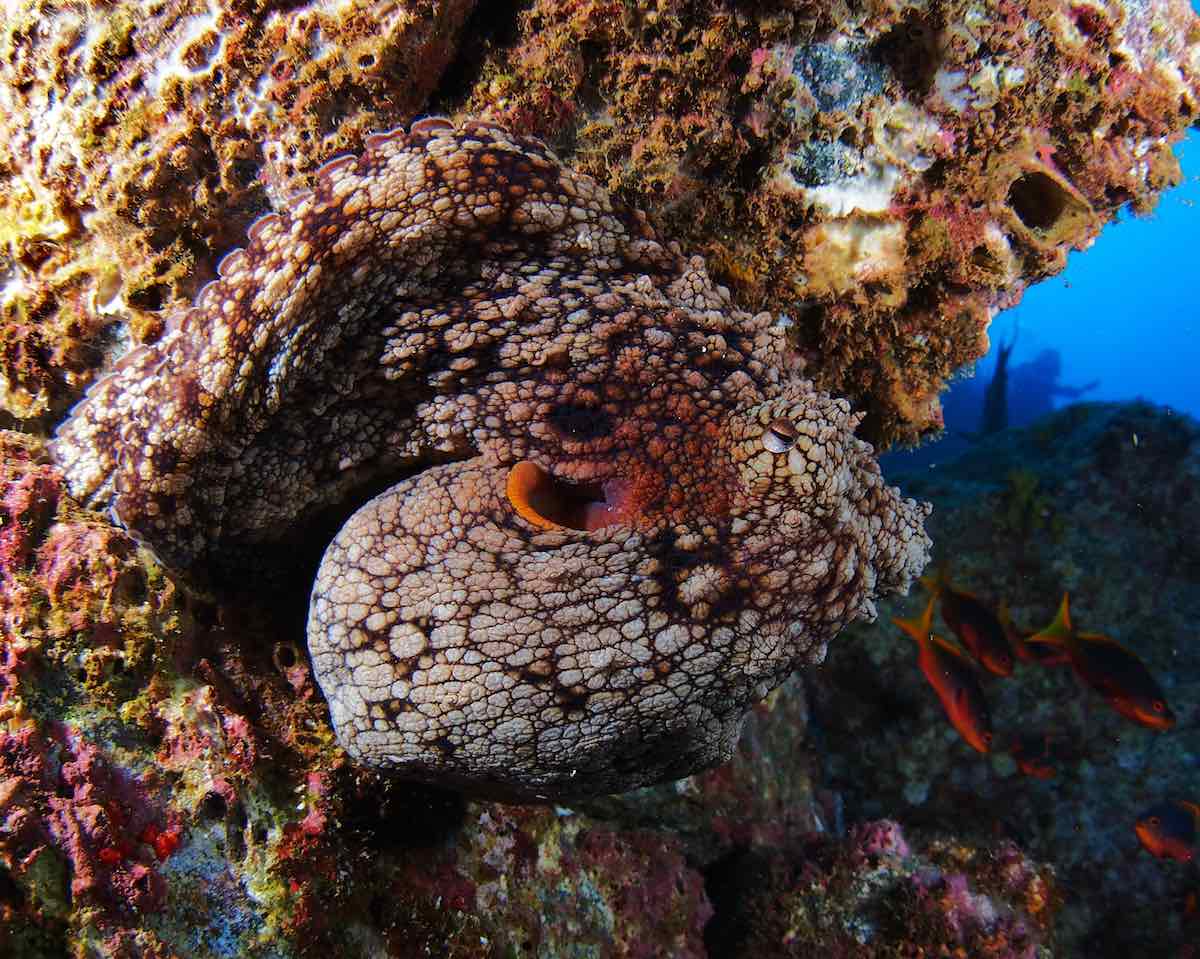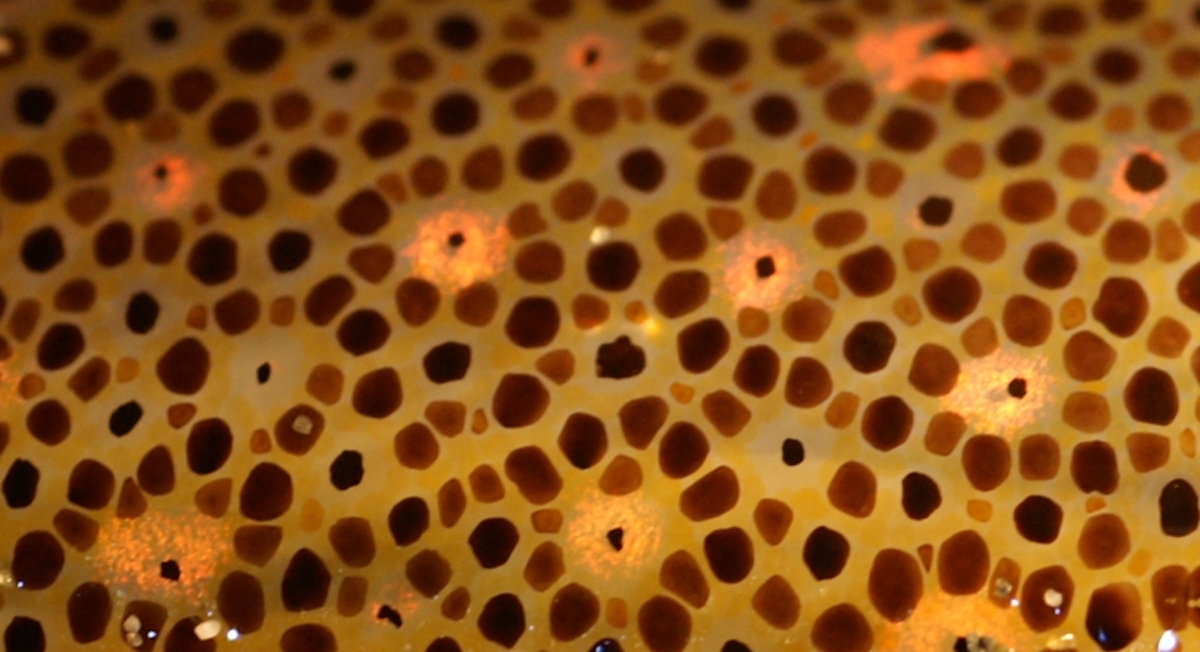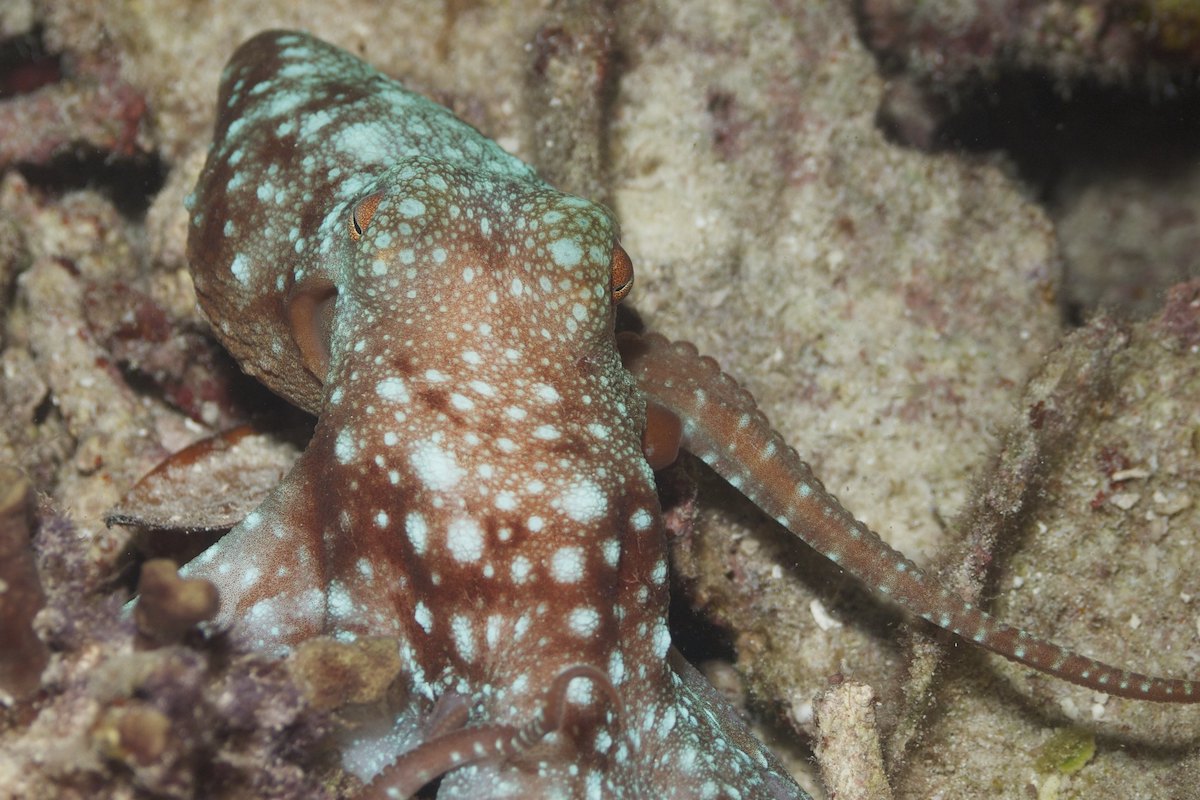How do Octopuses Change Color?
Here’s everything you ever wanted to know about chromatophores.

Octopuses have many super powers. They’re brilliant. They’re cunning. They can squeeze through small spaces and escape into the wild. And they manage to do it all without a backbone.
This World Octopus Day, we could spend all day diving into how octopuses manage to do what they do. But we’re going to focus on one particular, and remarkable, octopus feat: how these sneaky cephalopods change color.
If you’ve never seen an octopus change color, take a minute and watch it happen. Cephalopods, including octopuses, squid and cuttlefish, are part of an exclusive group of creatures in the animal kingdom who can change color based on their activity or surroundings. Other notable color-changers include seahorses, some amphibians and lizards (including the chameleon, naturally!)
Ok, so how do they do it? Cephalopods have specialized cells in their skin called chromatophores. Each chromatophore cell has a stretchy sac called the cytoelastic sacculus that is filled with pigment, which can be red, yellow, brown or black in color. When the muscles around the cell tighten, they pull the pigment sac wider, meaning more pigment is visible on the octopus’ skin. Conversely, when the muscles relax, the pigment sac shrinks back to size, and less pigment is visible.

Cephalopod chromatophores are unique compared to other chromatophores in the animal kingdom. Each chromatophore cell is attached to a nerve, meaning the expansion or contraction of the cells is controlled by the nervous system. When the octopus sees something, like a predator or prey, that prompts it to change color, its brain sends a signal to the chromatophores. However, a study showed the California two-spot octopus can sense light even without the brain—it possesses light-sensitive proteins in its skin that can detect changes in brightness.
So why do octopuses put so much energy into changing color? There are a number of advantages to blending into your surroundings, including escaping from predators. Unlike other species, octopuses don’t have a hard shell or sharp spines to protect themselves, so camouflage is their best bet for avoiding hungry predators. By using their chromatophores and changing the texture of their skin (yes, they can do that too!) octopuses can seamlessly blend into rocks, corals and sponges. They can also use color to warm predators, like the highly-venomous blue ringed octopus who flashes its blue rings to tell other animals to stay away.

Octopuses can use color to trick prey, too. The mimic octopus, who has been coined a master of disguise, changes its color and shape to fool prey into thinking the octopus is a different animal, like a flatfish or sea snake.
We’re just beginning to fully understand the story behind chromatophores, and new research is being published all the time! Just recently, a researcher captured footage of Heidi the octopus changing color in her sleep, leaving some to speculate she was dreaming (although, whether or not octopuses “dream” is a complex topic, and needs more research).
There you have it—all you ever wanted to know about chromatophores! This World Octopus Day, take a minute to appreciate these color-changing, smart-as-hell cephalopods.